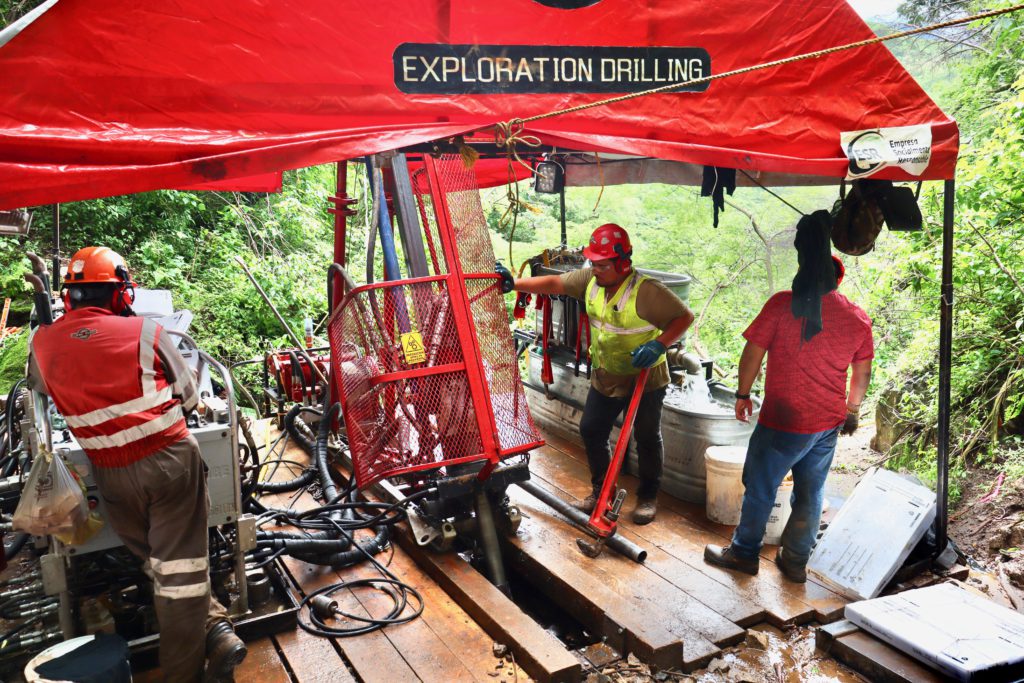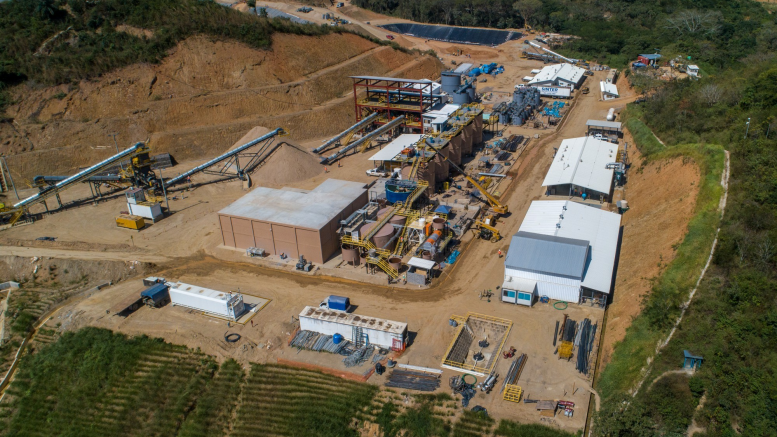Latin America is well-known for its long mining history and rich mineral endowment. This is the second part of two, highlighting four companies with exciting assets to watch. The first part is here.
Latin Metals
Latin Metals (TSXV: LMS; US-OTC: LMSQF) is a prospect generator focused on Peru and Argentina. The company acquires prospective exploration properties at low cost, establishing drill targets and securing joint-venture partners to fund drilling and advanced exploration. It retains an interest in each partnered project.
The company holds 13 projects in Argentina and six in Peru, along with two royalties. All six projects in Peru are copper while its projects in Argentina include copper, gold and lithium.
In terms of asset classes, royalties make up 11%; exploration projects 37%; projects available for joint venture 26%; and partnered projects 26%.
In Argentina, Latin Metals has option agreements on five assets with AngloGold Ashanti (NYSE: AU; JSE: ANG) and Moxico Resources, an unlisted copper miner in the U.K. with development projects in Zambia and Saudi Arabia.
AngloGold is earning into Latin Minerals’ -Organullo project, where it completed a high-resolution magnetic survey in 2023, and where the company plans to drill about 7,000 metres in the first stage this year. The property has seen significant historical exploration and has over 10,000 metres of drill data. Latin Metals has also optioned its Trigal and Ana Maria gold projects to the major.
Moxico Resources is earning into the Esperanza and Huachi copper-gold projects, where it plans to start exploration and drilling as soon as it secures permits. The best intersection at Esperanza returned 387 metres grading 0.57% copper and 0.27 gram gold per tonne and a porphyry system has been exposed over an area of 1,400 by 850 metres.
In March, Latin Metals identified significant geophysical anomalies at the Cerro Bayo exploration project in Argentina from historical exploration data collected by a previous operator at the project, including a 130-line-km induced polarization geophysical survey. It has an option to earn up to 100% of the gold project.
Executives and board members own half of the company’s common shares.
Latin Metals has a market cap of about C$10 million.
Mako Mining
Mako Mining (TSXV: MKO; US-OTC: MAKOF) operates the San Albino mine in Nicaragua, about 173 km north of the capital, Managua, and the Eagle Mountain gold project in Guyana, 230 km southwest of Georgetown.
Mako acquired Eagle Mountain from Goldsource Mines (TSXV: GSX; US-OTC: GXSFF) in July 2024. A PEA completed in January 2024 outlined production of 66,500 oz. gold per year for 15 years. At a gold price of $1,850 per oz., Eagle Mountain would generate an after-tax net present value (at a 5% discount rate) of $292 million (C$418 million) and an internal rate of return of 57%. Initial capex was estimated at $296 million.
Mako Mining reported drill results from the Eagle Mountain and Salbora deposits at the project in February. A geotechnical drill hole in the northeastern zone at Eagle Mountain returned 16 metres grading 2.93 grams gold per tonne starting 45.5 metres down hole in EMD24-pitgeotech015.
At Salbora, a geotechnical drill hole cut 31.5 metres grading 3.73 grams gold starting from 22.5 metres downhole in EMD24-pitgeotech011, and a continuous horizontal channel sample of outcrop returned 21 metres of 8.42 grams gold with a sub-interval of 12 metres grading 13.51 grams gold in the mineralized breccia.
Eagle Mountain contains indicated resources of 31.1 million tonnes grading 1.18 grams gold for 1.2 million oz. contained gold. Inferred resources add 18.4 million tonnes grading 0.98 gram gold for 582,000 oz. gold.
The San Albino mine, one of the world’s highest grade open pit gold mines, about 15 km southeast of Nicaragua’s border with Honduras, produced 14,616 oz. gold during the fourth quarter of last year at an average grade of 9.73 grams gold and 13,147 oz. silver at 8.75 grams silver.
Mako Mining has a market cap of about C$314 million.
Meridian Mining
Meridian Mining’s (TSX: MNO; US-OTC: MRRDF) Cabaçal gold-copper-silver deposit in Brazil is expected to produce 141,000 gold-equivalent oz. per year over 10.6 years at all-in sustaining costs of $742 per silver-equivalent oz., according to a pre-feasibility study released on March 10. During the first five years, Cabaçal’s open pit would produce 178,000 gold-equivalent oz. annually.
At metal prices of $2,119 per oz. gold, $4.16 per lb. copper and $26.89 per oz. silver, the project would deliver a post-tax NPV (at a 5% discount rate) of $984 million (C$1.4 billion) and an IRR of 61%. The study boosted Cabaçal’s NPV by more than two-thirds over a previous report from 2023. Initial capital of $248 million could be repaid in 17 months.
The company expects to release a feasibility study for Cabaçal in the first half of next year.
Cabaçal would produce two products: gold and silver in doré bars and copper and gold concentrate. The flow sheet envisions a plant processing 2.5 million tonnes per year of run-of-mine feed from the pit in the first three years, followed by an expansion in year three to 4.5 million tonnes per year from the fourth year. About 30% of the mill feed will be sent to a gravity separation circuit to recover free gold.
Cabaçal hosts 41.7 million tonnes in proven and probable reserves grading 0.63 gram gold, 1.64 grams silver and 0.44% copper for contained metal of 849,880 oz. gold, 2.19 million oz. silver and 405.4 million lb. copper.
The project in Mato Grosso state is about 320 km northwest of the state capital, Cuiabá.
Highlights from drill results released in February included 21 metres grading 3.8 grams gold, 1.9% copper and 5.8 grams silver (6.5 grams gold-equivalent/4.4% copper-equivalent) starting from 95.3 metres downhole in CD-639. It included 7.1 metres averaging 6.9 grams gold, 1.6% copper and 5 grams silver (9.2 grams gold-equivalent/6.2% copper-equivalent) from 104 metres.
Meridian Mining has a market cap of about C$216 million.
Mithril Silver and Gold
Mithril Silver and Gold (TSXV: MSG; ASX: MTH) reported high-grade drill results in early March from the La Soledad target at its Copalquin gold-silver project in Mexico’s Durango state.

Highlights are 4.95 metres grading 20.5 grams gold and 1,833 grams silver starting from 107 metres, including 0.55 metre of 110 grams gold and 7,530 grams silver from 110 metres in drillhole MTH-ES25-11. Drillhole MTH-ES25-10 returned 2.55 metres grading about 10 grams gold and 571.8 grams silver from 112 metres, and MTH-ES25-09 cut 0.25 metre grading 15.2 grams gold and 786 grams silver from 98.25 metres.
The La Soledad structure is open at depth and to the northwest.
The company says it intends to drill 35,000 metres this year to expand the resource footprint and define the 10-km-wide epithermal silver-gold system.
The project hosts a JORC-compliant resource of 691,000 indicated tonnes grading 5.43 grams gold and 114.2 grams silver for 121,000 oz. contained gold and 2.54 million oz. silver. Inferred resources add 1.73 million tonnes grading 4.55 grams gold and 151.7 grams silver (6.72 grams gold-equivalent) for 252,000 oz. contained gold and 8.41 million oz. silver.
Mithril notes that there are 100 historic underground gold-silver mines and workings and another 198 surface workings and pits across its 70-sq.-km. concession. The project is about 20 km east of the town of El Durazno, and a four-hour drive north of the city of Culiacan.
Mithril Gold and Silver has a market cap of about C$41 million.


Be the first to comment on "Spotlight: Latin America projects to watch – Part 2"